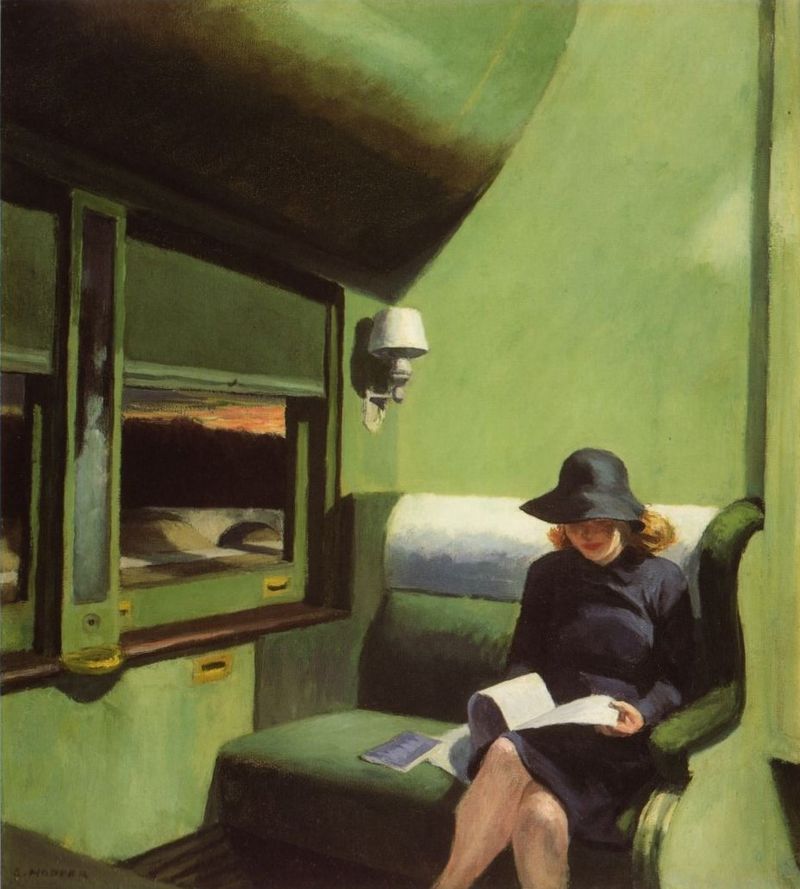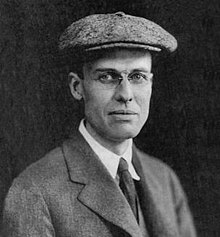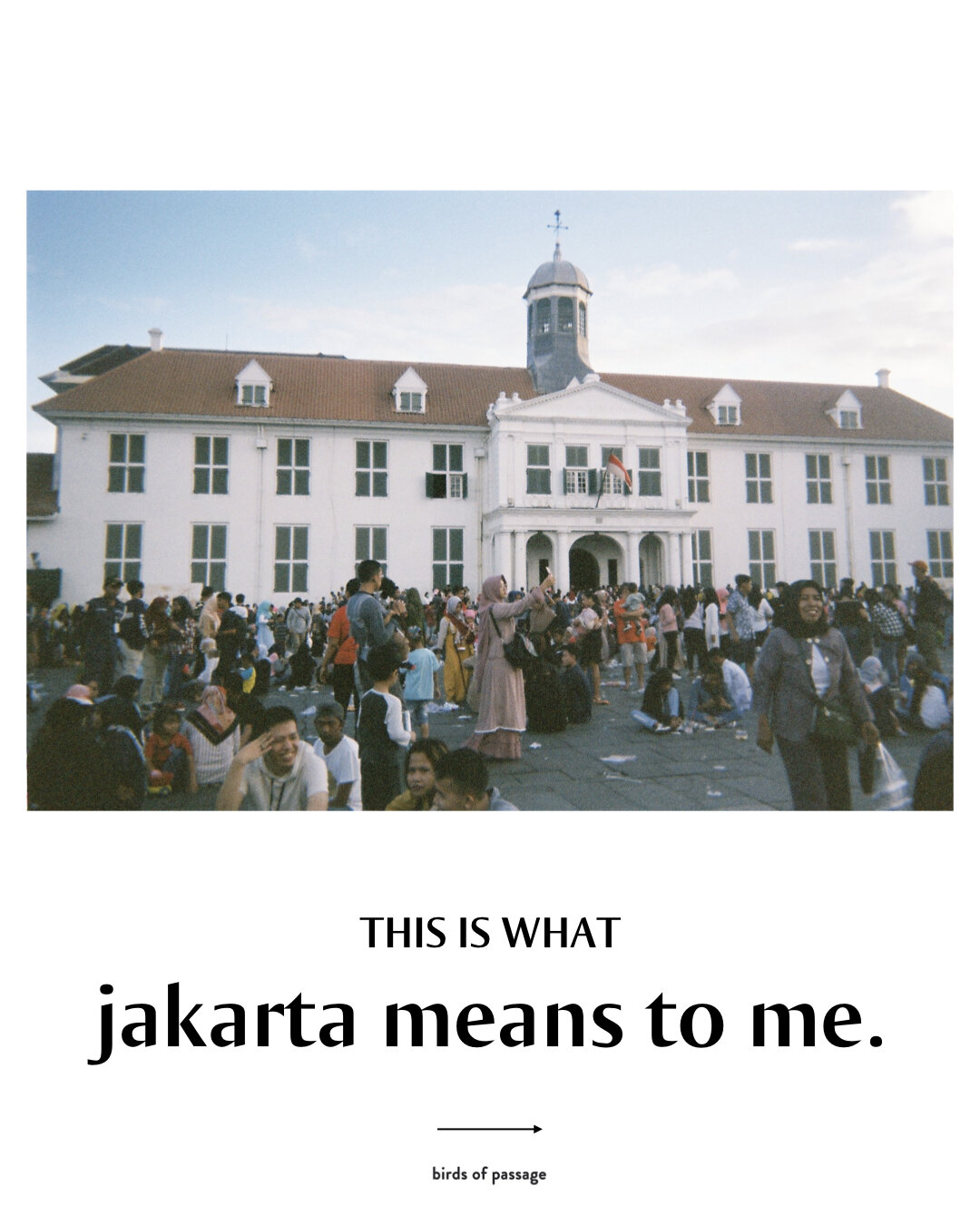Thoughts in Motion x Edward Hopper
Reflections on reflecting pensively on trains, and how the clearest understanding of one’s self and one’s path come to be on these journeys. Edward Hopper’s Neoclassical paintings of train rides act as the perfect medium for discussion.
While in motion, it might be best to carve out time to sit pensively and look out the window, staring at nothing, and think. Somehow onboard trains, you would be given the luxury of thinking clearer and deeper than your day to day, so rest your book and your phone for a little while and let your mind wander. It’s kind of odd given that on these journeys, we are all just sitting in one spot for hours and hours on end. What would make this any different from the hours we spend sitting in our desks?
A few years ago, someone once told me that the best way to solve a problem is to take a walk. It’s not just about getting you physically and mentally out of the place you’ve been stuck at, but more so experiencing a defined sense of a beginning and an end. This clear timeline is similar - no, exactly the same, as that of an epic of a knight in shining armour. You are both the damsel in distress and the knight in shining armour in this story. It would subconsciously push you to progress your issues to a resolution.
Compartment C Car (1938)
I’d like to think the characters in Edward Hopper’s many train ride-related artworks to be pensive. These Mad Men-esque paintings show travelers en route, with no sign of emotions, only stillness. I imagine the lady in Compartment C Car staring out the window, at streams, bridges. Observing how the light at dusk touches the pine trees, and then seeing the night unfold. Maybe if Don Draper rode on more trains, he wouldn’t need to go on an entire meditation journey or completely lose his mind.
Looking Out The Window
American Locomotive (1944)
There is enough to see outside to play as backdrop for our moments of reflection. Alain de Botton best explains this. Trains are different from other modes of transportation. It does not feel as claustrophobic as airplanes or intercity buses. Your view isn’t as monotonous as looking at the sky or the vast blue while onboard planes, ferries, and ships. It isn’t as detailed as if you were to take a car ride.
There’s enough texture and variation to keep you entertained, and yet everything is fleeting. You wont have enough time to form a story from what you see. At times, you will pass through a forest, the other, houses by the rail. You could barely capture any detail. Maybe you remember the lemon trees shading the lawn, but cant recall the color of the house door.
It’s there, it’s there, it’s gone.
The Wandering Mind
Railroad Train (1908)
By definition, travelers are wanderers. We are all searching for something, and more often that not, that something is unknown. We are exploring the world but at the same time trying to get a better sense of who we are and where we will go, both literally and figuratively. They all seem to surface, you thoughts, as a way to keep your idle mind entertained. We would find ourselves thinking of the things beyond the day to day. Less so of “what am I going to have for dinner”, kicking ourselves in the gut as we remember that foolish thing we did eight months ago, but more of a self-check. A psychological spring cleaning. How we wish to better ourselves. How we’ve treated those around us. What we want to do.
Thinking in motion is no different than thinking in your shower. You feel that so many great ideas, comebacks to arguments you had last season, and clear thoughts come to you when warm water is showering you, and it’s because you’re relaxed and aren’t so hypercritical of yourselves.
Coming/Going
Approaching a City (1946)
When the trains slowly start to take motion, you are flooded with a mix of emotions. You stare out the window, seeing the place you’re leaving behind and attempting to absorb every grain of the image. Like failing your eye exam, the sharp details and size gradually decrease, until it’s a tiny, unrecognizeable structure, and then it’s gone. It feels like you are closing a chapter. The train leaves the past behind, if you don’t - or cant.
Yet now you are approaching a new town, and the reverse occurs like some preview of what’s to come. You only see the top halves of buildings. You see posters of the city. The signs are now all in a whole new language. It feels something bigger than you.
The past fades to a blur. The future coming to a clear picture. You’re at your stop now.
About Edward Hopper
Edward Hopper is one of the most famous American painters of all time, capturing realistic portrayals of modern American life in a clean, smooth canvas. The themes usually revolve around quietness, stillness, contemplation, and loneliness.
Nerdwriter does a great analysis of the artist’s most recognizeable work: Nighthawks.
Written by Nadia Pritta Wibisono. Art by Edward Hopper.














A discussion on the slightly darker side of ‘needing to go’ paired with Stevie Smith’s She got up and went away poem.
There’s a few things I say over and over again when it comes to travel, and you might have heard them all before, quietly making its way in to the paragraphs of a range of articles and musings here. The one I’ve said most often is along the lines of “immersing yourself in a new city like a local”. But the one I’ve repeated, maybe here, maybe in my journal, and maybe in my many attempts of explaining why I travel to my loved ones is this: Travel is my reset button.